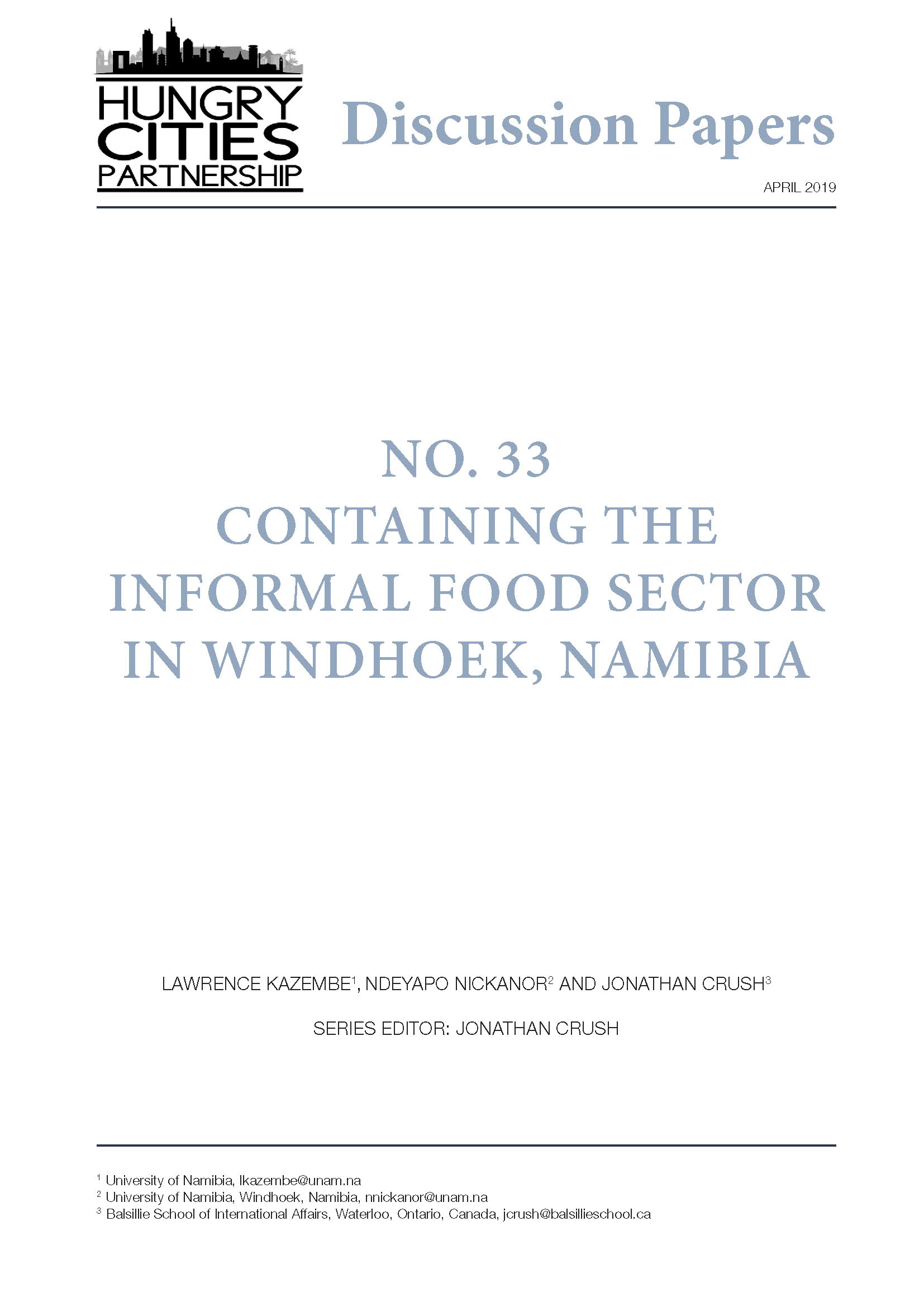Policy responses to the growth of the informal food sector in African cities vary from benign neglect to active destruction. The eradication of street food vending is the dominant mode of governance. Alternative approaches that recognize the inevitability of informality and the role of the sector in making food accessible to the urban poor have begun to emerge. One is an enclose-and-contain model, which creates spaces for trading and seeks to confine trading to these spaces through active policing outside them. This strategy has been pursued in Windhoek but has been compromised by consumer demand that is not satisfied by the city’s approved markets and by the actions of street traders who cluster at key locations and force tacit official recognition. This paper examines the origins and development of this hybrid model of informalized containment, as well as the profile of consumers who patronize both types of market.

